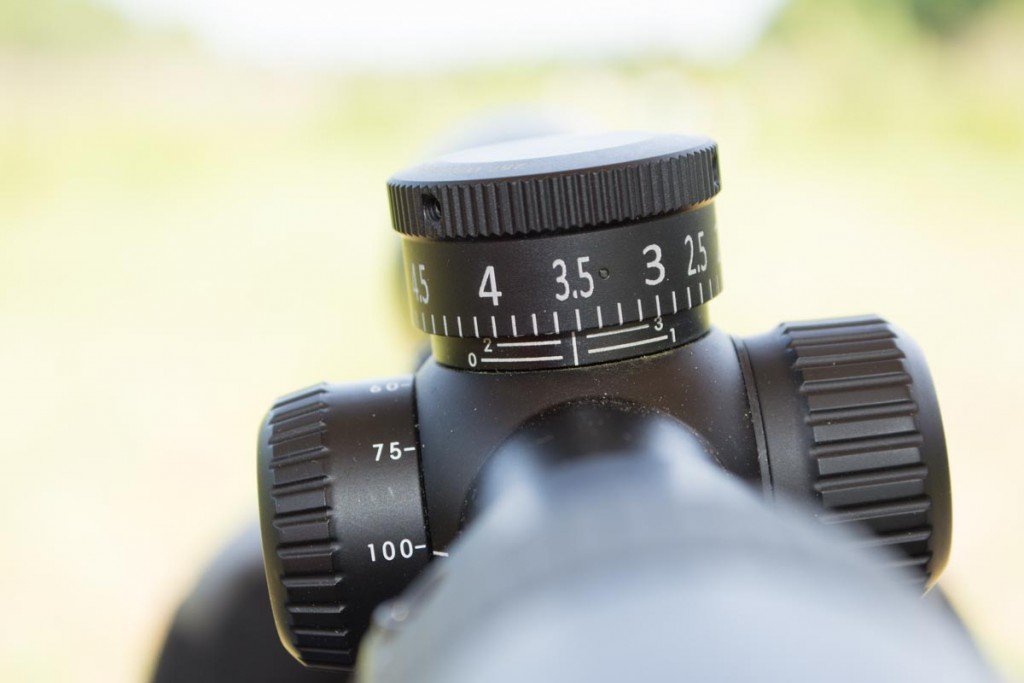
This custom Nikon ProStaff XR Turret is set for 350 yards using my personal .257 Weatherby Magnum hand load. I haven’t yet adjusted the parallax for the correct yardage.
Making long-range shots is part math, part skill, and part VooDoo.
The math part is very predictable, and only somewhat complicated, thanks to the advent of ballistic software you can get online, in devices like Kestrel Weather Meters, and on smartphones. The software does the hard work and negates for the need for you to whip out that old slide rule.
When you fire a bullet down range, gravity takes over the very picosecond the projectile leaves the barrel and begins pulling the bullet toward the ground. The time element is most important because gravity doesn’t care how fast the bullet is moving forward; it only cares about how long the bullet is exposed to gravitational force. A big fat bullet moving slowly downrange only gives the illusion that it’s falling faster than a light, fast bullet. It makes no difference how fast the bullet is moving forward, it will still fall the same distance vertically over the same period of time. The only reason faster bullets fly “flatter” is because they cover more distance in any given unit of time. Hyper-velocity projectiles are subject to the exact same laws of gravity as the rest of us.
Since gravity is entirely predictable, figuring out how far a given bullet will drop is a matter of understanding its drag model. How fast does it slow down and how does the rate of “slowing down” change as it flies down range? That’s the job of rocket-surgeon-ballisticians, so we don’t have to calculate that. We just need to provide the inputs to their fancy mathematical models.

I entered details about my rifle, scope mount, and specific ammunition performance on Nikon’s web site to configure my custom turret cap.
For any given bullet, the drag models take into account a number of factors. For example, the model needs to know the weight, length, shape, and diameter of the bullet. Other inputs include velocity and current atmospheric conditions. The drag model takes all these things (and more) into account to predict the velocity of the bullet as it travels down range. Knowing its velocity curve, the model can figure out the near-exact effects of gravity.
You can do this on your own using a ballistic app or tool like a Kestrel weather meter with ballistic software. There are other ways to accomplish a similar result assuming you’re going to be shooting the same gun and ammunition frequently. One way is to use an optic with a ballistic drop reticle. That means the elevation hash marks are made at the factory to correspond with the flight path of a certain type of ammunition. For example, to hit a 300-yard target, you might hold on the third line below the crosshairs. This is a reasonable approach if you’re going to be shooting ammunition identical to what the optics maker specifies. Outside of that, you rapidly lose precision. If you have a .223 rifle, this approach might work great for a 55-grain, flat-base bullet moving at exactly 3,020 feet per second. If you buy a box of 62-grain ammo, you lose precision and those hash marks may no longer be a reliable indicator of bullet drop.
Nikon has taken a different approach to solving the challenge of quickly finding the right scope adjustments for a given cartridge and rifle combination. Rather than forcing the shooter to use an “average” ammo load and hoping performance from their specific rifle matches the ballistic drop reticle, they’ll customize a scope for you, your rifle, and the exact type of ammunition you like to shoot.
When you buy a select Nikon ProStaff or Monarch model with the Custom XR Turret, you’ll get a scope with a standard elevation dial installed. That shows minutes of angle adjustments where each click of the dial indicates a ¼” change in bullet impact at 100 yards. You can use this system like any other optic, and calculate how much adjustment you need to make for a given shot.
You also get a coupon for the free manufacture of a Custom XR Turret. When you fill out the requested information online, Nikon will make a new turret engraved with yardage markings. Using the Custom XR Turret, if you have a 450-yard shot, rather than do all the math to calculate minutes of angle, you simply turn the turret to the mark that reads 450 yards. The folks at Nikon have already done all the math factoring in your rifle, your cartridge, and height of your scope mounts to figure out exactly how far your bullet will fall at 450 yards, so you’ll get a first-shot hit.
I was itching to see how this custom optic worked, so I acquired a Nikon ProStaff 5 4.5-18×40 Custom XR Turret model. I’ve got a Weatherby Vanguard .257 Magnum rifle that’s proven itself incredibly accurate, so I logged into the Nikon Sport Optics website to order a custom turret for this rifle using my favorite .257 Weatherby Magnum hand load.
I supplied detailed information including the exact bullet type, velocity from my rifle, zero range, sight height above the bore, and my average local atmospheric conditions. A week or so later, I received my very own turret cap, elegantly engraved with “.257 Weatherby Magnum TTSX” on the top and yardages around the turret drum.
Installation of the new turret cap took only a couple of minutes. Being careful to keep the existing turret adjusted to my 100-yard zero setting, I removed three tiny Allen screw with the included wrench and removed the existing turret cap. I installed the new Custom XR cap with three additional screws that were included with the custom cap.
The first order of business was to make sure the “1” setting on my new cap was still accurate at 100 yards. I fired a three-shot group and found it to be dead on.
Next, I decided to test various readings against known distances, also by firing three-shot groups at each range. I had available range space of exactly 363 yards, so I set up additional targets at 200, 300 and 350 yards as those distances have clear markings on the Custom XR Turret.
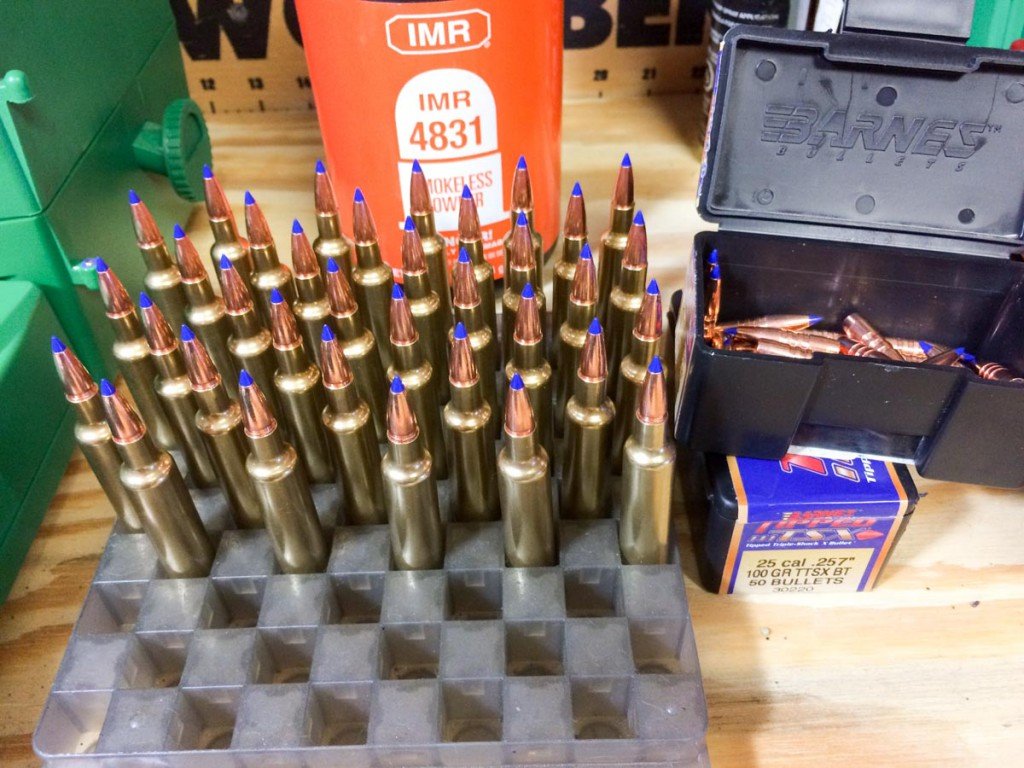
I ordered the custom turret configured for a .257 Weatherby Magnum hand load using Barnes 100-grain TTSX bullets.
First up was the 200-yard target. I wasn’t concerned with the wind as the goal is to test the elevation accuracy of the custom turrets. According to my Ballistic AE iPhone app, the bullet drop at 200 yards was only going to be about 1.66 inches, so I figured the 200-yard calibration was kind of a gimme. I ended up firing four shots, the extra being cause I was having fun. As you can see by the photo, the group was about 2 ½ inches and evenly distributed around the bullseye.
Next, I set up another target at 300 yards and spun the turret to the “3” indicator. I fired three shots that landed on just a hair on the lower side of the bullseye. The group was about 2 ⅜ inches with one shot just over the bullseye and two just below. Still on target. For a hunting application, the turret setting at this distance resulted in an actual impact within the diameter of a heart. Not too shabby.
[one_half]
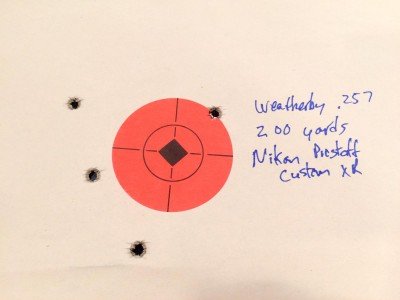
At 200 yards, the elevation was right on. Two shots above the centerline of the 2-inch target and two below.
[/one_half]
[one_half_last]
[/one_half_last]
Finally, I moved out to 350 yards and adjusted my custom turret accordingly. At this distance, my .257 Weatherby Magnum hand load using 100-grain Barnes TTSX bullets has dropped a theoretical 12.09 inches in flight. It’s still cooking along at 2,527 feet per second and carrying 1,417 foot-pounds of energy. This distance was where I won the shooting lottery. If you look carefully at the photo, you’ll see a hit directly, and I mean directly, on the center bullseye. Sometimes dumb luck is better than skill! The three shot group measured 2 ¼ inches center to center and were all within one inch of the correct vertical drop.
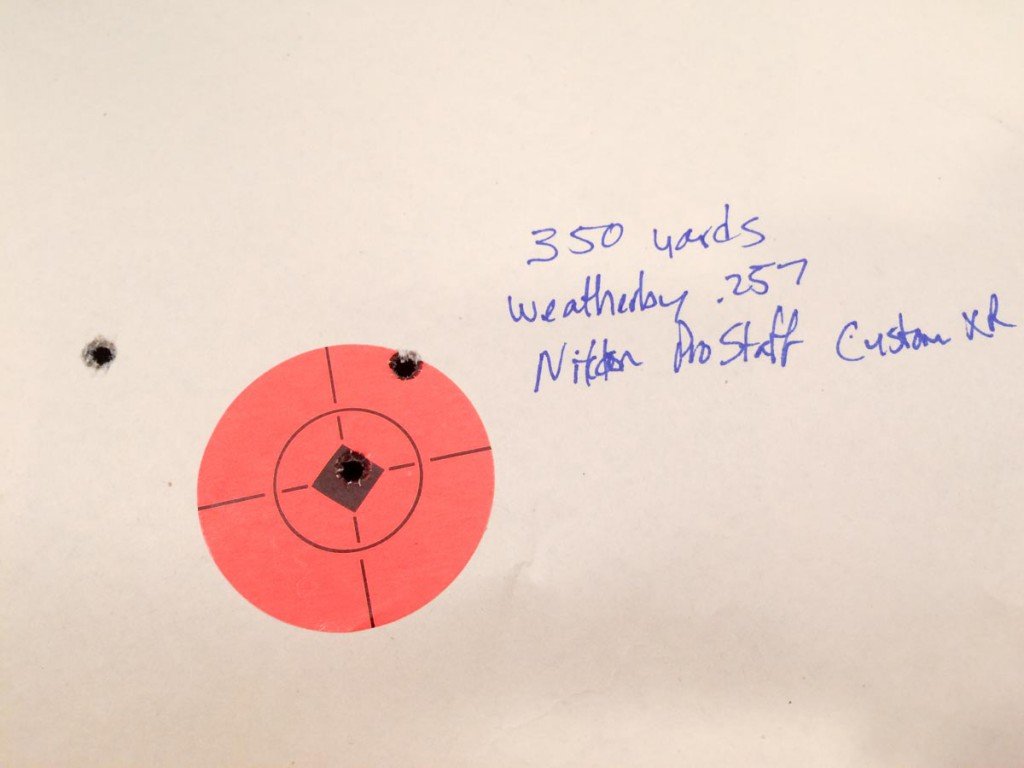
With this kind of luck I’m running out to by 1,000 Lotto tickets! Note the dead center hit on this 2-inch target from 350 yards. I’d say the elevation setting was calibrated properly!
I’m a self-confessed ballistic geek and love breaking out a Kestrel and Ballistics AE app, but I have to admit, this is a heck of a way to shoot. With the advent of inexpensive laser rangefinders, it’s now easy to quickly gauge an accurate distance. Dial that up on your turret and shoot.
The beauty of the system is that you’re only replacing the turret. If you want to use the same scope on other rifles, you just order additional turret caps. I’m going to order a custom turret for this scope in .22-250 as I think it would make an incredible varmint hunting accessory. Lase the distance, dial the turret, gauge the wind, and shoot.
At the beginning of this article, I mentioned that longer range shooting is part match, part skill and part VooDoo. The Nikon ProStaff with Custom XR Turret handles the vertical math, so you can focus on the skill and VooDoo components, mainly reading and accounting for wind.
Specifications
Magnification: 4.5-18x
Objective Diameter: 40mm
Exit Pupil: 2.2-8.9mm
Field of View: 5.6-22.4 ft @ 100 yds
Tube Diameter: 1 inch
Eye Relief: 3.7-4in
Eyepiece Outside Diameter: 44mm
Weight: 18 oz
Overall Length: 13.6 in
Adjustment Graduation: 1/4 inches at 100 yards
Max Internal Adjustment: 40 MOA
Parallax Setting: Other 50 yds – ∞
Side Focus: Yes
Waterproof/Fogproof: Yes
Reticle: NikoPlex
MSRP: $499.95
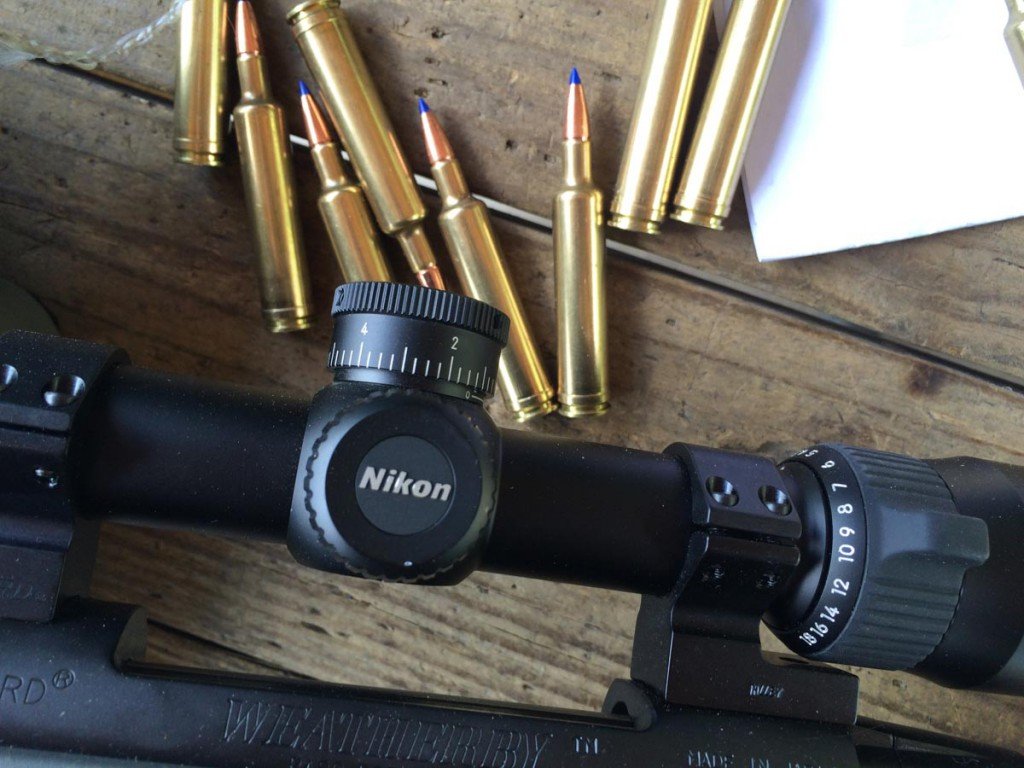
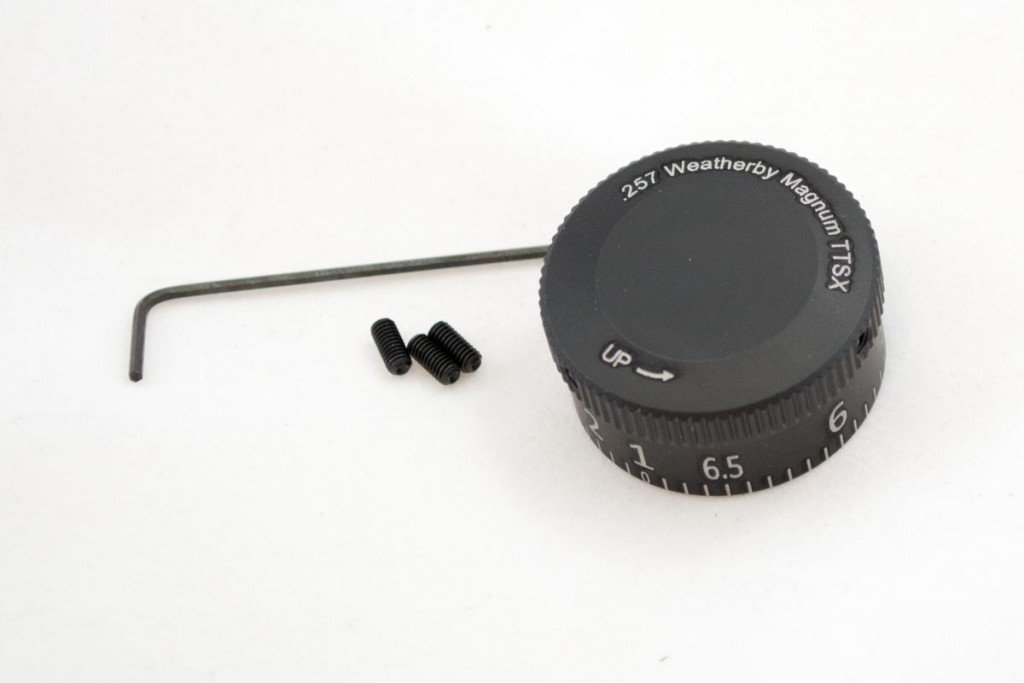
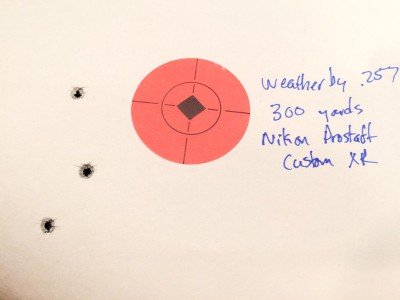

It seems I’ll also need to order a second turret if I want to shoot lighter or heavier loads from the same rifle, correct?
It’s actually very complicated in this busy life to listen news on Television, therefore I simply use world wide web for that reason, and take
the hottest information.
This is so interesting and helpful. I was just talking to my brother about this today. This Nikon is his fav
I really don’t understand why they didn’t use or have the option of a traditional mil-dot reticle. The Nikoplex requires a range finder since you can not use it estimate target range. I really would love to have a custom turret, but I am not going to limit myself to needing additional equipment. I will continue with my Shepherd Scope for now. This is Great for the range, but not for the field.
I really don’t understand why they didn’t use or have the option of a traditional mil-dot reticle. The Nikoplex requires a range finder since you can not use it estimate target range. I really would love to have a custom turret, but I am not going to limit myself to needing additional equipment. I will continue with my Shepherd Scope for now.
I am shooting groups that size at 300 yards using a 20″ 1/8 chf AR15 with match 223 ammo. I wasn’t pleased but after reading this article maybe Im expecting too much?
One would think that a photo of the reticle might be appropriate instead of a picture of ammo.
I love these long range shooting reports. I own two Nikons with BDC reticles. I soon will be testing there spot on phone app at the new CMP talladega range. That range goes out to 600 yards. I definitely will bring my Krestel. My only grip about Nikons are I wished they had wind hold hash marks similar to huskemaw scopes.
That would be nice, I agree. Much easier all around to dial for elevation, but just hold for wind as it changes so quickly.